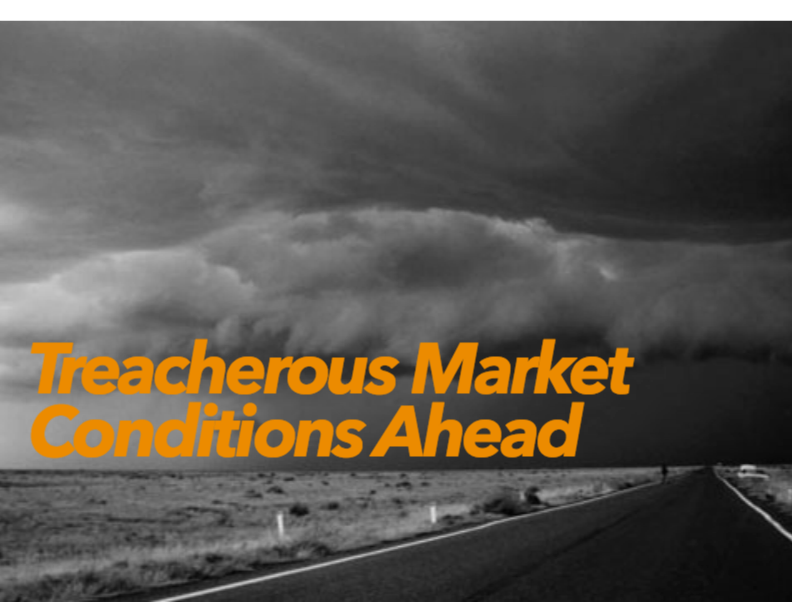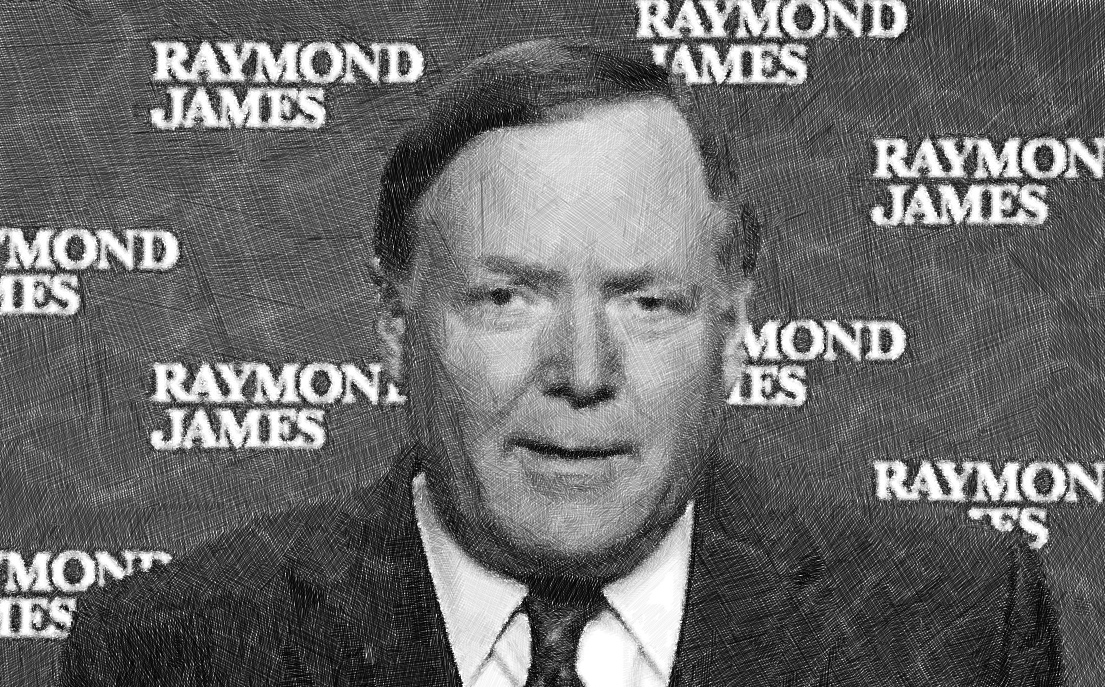by Guy Haselmann, Director, Capital Market Strategy
Scotiabank, Global Banking and Markets
Treacherous Market Conditions
Vanishing QE Matters
When the latest round of QE was announced in September of 2012, the economy was healing. Considerable progress had been made toward the Fed’s dual mandates and the FOMC was already providing extraordinary accommodation through two policy actions, ZIRP and forward guidance. At the time, I thought the action was overkill and bordered on recklessness.
I wrote that open-ended QE (dubbed ‘QE-infinity’) was dissimilar to the earlier QE programs for three reasons: 1) it began under much different economic and financial conditions; 2) its open-ended time frame hijacked the markets’ typical price discovery and discount mechanisms; and 3) it began after earlier actions had already changed investor behavior. At the time, moral hazard was already alive and well.
Financial assets are valued simply by aggregating the discounted value of future cash flows. The fact that the FOMC did not give QE (and thus ZIRP) an end-date meant that price discovery for financial assets were demolished. Investors increased their ‘melt-up’ mentality, because the discount rate used to value cash flows could be assumed to be zero in perpetuity. Dividing a number by zero equals the empty set. Investors were not willing to ‘fight the Fed’ and why should they; the Fed was showing determination to stay the course until it was satisfied with the pace of the recovery.
Yet, the US and global economies have only been able to muster sub-par growth despite massive (pre-2014) coordinated accommodation. Shouldn’t investors today worry more about how the global economies will perform now that QE is ending, China is reeling-in its credit bubble, Japan has initiated the first of a series of VAT hikes, and EM central banks have hiked rates?
Investors and portfolio managers constantly ask what the timing associated with, or what the catalyst will be, that derails the asset rally. Last year, I suggested it would be when the Fed began exiting from QE-infinity. Clearly, the catalyst is in the rear view mirror. Moreover, it is accompanied by the other factors mentioned in the preceding paragraph. The purpose of this note is to serve as a reminder that the time is now and the catalyst(s) have set the wheels in motion. Risk/reward is skewed to the downside. With these ‘policy pivots’, investors should demand a higher burden of proof that the economy and risk assets can stand on their own. Investors should forget trying to determine valuation. Weak growth mattered little to the surge in risk assets during the last few years. In addition, the ‘P’ and the ‘E’ are distorted by Fed policy and ZIRP-induced share buybacks; and thus should be de-emphasized. The bottom line could simply be that QE means ‘risk-on’, while ending QE means ‘risk-off’.
Expecting Too Much of the FOMC
Markets afford the FOMC too much reverence. I am confident that the Fed is overpromising and over-reaching on what it can actually deliver. It has always been quite a leap of faith to believe that ever-rising asset prices would create a wealth effect adequate enough to boost consumption, so as to make progress on the Fed’s dual mandates without causing adverse financial markets conditions.
An apt analogy to the Fed’s visible efforts might be the World Cup referee who early in the game tries to maintain order by calling a tight game, but continues blowing the whistle so frequently that the referee becomes the show. After a while, the fans begin gauging the validity of every disruptive whistle, rather than spectating on the beauty of the game. A good referee is typically one who went unnoticed during the game or one who was quickly forgotten once it ended.
It is confounding to me why markets have so much confidence in the Fed’s ability to fix the complicated ailments of the economy, especially given its limited tools. One FOMC member told me two years ago that “my colleagues want to be looked at, as if, they are doing something {to achieve their dual mandates}; even though they know that the benefits are quite small”. Such credence, however, fails to adequately consider the negative aspects of the policy action.
I believe the FOMC has chronically miscalculated the relationship between the short-term economic benefits and the longer-term financial market costs of its policies. How much are Fed policies sacrificing future consumption at the expense of benefits today? To what extend are Fed policies fueling generational and social-class inequalities?
I suspect that the Fed has been hoping that economic fundamentals would improve enough by the time QE was brought to an end to validate the artificially elevated asset prices that QE created. What if the FOMC is pulling back from its QE program, because members fear that its policies are building risks to financial stability at a faster pace than the economy is improving? If so, many investors are wrong-footed.
Measuring Moral Hazard
Investors have had a remarkable run during the last 4 years of risk-seeking, don’t-fight-the-Fed strategies. Yet, investors should not believe that the FOMC has a handle on the magnitude of the moral hazard and risk positions that have been built over this period. The Fed’s concern around the market’s reaction-function to QE is likely a major factor as to why the FOMC is tapering at a gradual pace. As such, the Fed probably wishes QE was already completed. It would certainly improve the FOMC’s flexibility.
Does the pace of tapering really matter? Will it have a material impact on valuations or the aggregate economy if the Fed is buying $65, $45 or $25 billion of assets in month X, Y, and Z respectively?
FOMC members want markets to believe that they are “data dependent”, but such verbiage could be a ‘slight-of-hand-trick’; espoused so that too much focus is not paid to the fact that the QE program is ending. This might be the reason that markets not reacted to the catalyst(s) to pare risk or why they have been slow to act. Despite Fed rhetoric, investors must realize that the hurdle to deviate from its $10 billion per meeting pace has always been enormous.
The market’s unremitting focus on every adjective and word uttered by the FOMC is inane, simply because the Fed is on a steady course for the next 6 months. This is a clear example that the FOMC has become too visible and too involved in financial markets. The ECB recognized that there are negative consequences to such market interference. Draghi stated that he could envision fewer ECB meetings, because he felt that their frequency leaves the market expecting action too often.
Self-Inflicted Quagmire
The Fed’s chronic desire for slack-less growth has stair-stepped official rates to zero over the last few decades, has made (unconventional) accommodative measures seem necessary, and has resulted in a depleted arsenal. Hence, the FOMC is at a critical juncture; and FOMC members have only themselves to blame for being in such a position.
The Fed’s ability to reverse any new ebb in economic activity in the future is now severely limited, increasing the importance that current Fed initiatives succeed. This is likely the justification for QE-infinity. Today, the Fed has little choice but to stay overly accommodative even if the economy heals satisfactorily. With this in mind, most expect the economy to heal and are preparing for the inflation battle. However, such an outcome is not assured and big problems will arise should the economy sputter.
Boom to Bust and Back Again
Prior to 2008 (under Greenspan), the Fed believed that the financial sector was mostly self-stabilizing and that bubbles were un-identifiable. The FOMC believed that, if necessary, they had the ability to ‘clean up’ after excesses (i.e., bubbles popped). Greenspan’s Fed believed that it had the adequate tools for ‘after-the-fact’ crisis management; which it believed was always more appealing than making the politically difficult decisions that would have been necessary to prevent financial crises or imbalances in the first place.
After the 2008 crisis, policymakers have tried to end this mindset by becoming more proactive in trying to prevent financial crises. Though well-intentioned, this new approach has arguably led to Fed policy itself becoming a source of systemic risk. In such, I believe the Fed’s atlas-complex and micromanagement are fermenting dangerous market conditions that have sown the seeds of the next market upheaval.
The Inverted-U Curve
If I had to graph the beneficial effects of (excessive) regulation and interventionist central banks and governments, I suspect it would have the shape of an inverted-U. Like most good things in life, a little is fine, but too much can kill you. There are often cumulative effects where short term benefits marginally decrease over time until eventually they turn into ever-mounting negative longer-term consequences.
The basic logic behind the inverted-U curve is that strategies that initially work well stop working past a certain point. Maybe a non-financial example would be useful. Criminologists often argue that punishment has inverted-U curve characteristics. Studies show that there are benefits to imprisonment, but lock up too many people for too long and the collateral damage starts to outweigh the benefits.
There are direct and indirect effects to incarceration. The direct effect prison has on crime is that it puts a bad person behind bars, where he can’t victimize anyone else. However, longer sentences work only on young men, because studies suggest that once someone passes the crucial mid-twenties age, all longer sentences do is protect society from dangerous criminal at the point that they become less dangerous.
The indirect effect on crime has to deal with how a person’s imprisonment affects all the people with whom that criminal has a relationship. A high number of those incarcerated are fathers and it has a devastating effect on his children (even one-fourth of convicted juveniles have children). Earnings –both from crime and legal jobs – also no longer support families. Having a parent incarcerated increases a child’s chance of juvenile delinquency by 400% and the odds of a serious psychiatric disorder by 250%.
Negative second-order consequences are always harder to measure and identify. Nevertheless, I firmly believe the FOMC policy has far surpassed its period of net benefit. I believe it is the second-order negative unintended consequences that will soon appear as the Fed implements its exit from QE.
Market Complacency
Many investors are sitting on their hands unsure of what to do; unsure how to value financial securities; unsure what the true price of money is; and unsure just how far governments are willing to go before popular backlash arises. Gillian Tett recently wrote in the Financial Times, “Far from being a sign of sunny confidence in the future, ultra-low volatility may show that investors have lost faith that markets work”.
It seems only fitting that Paul McCully, the man who coined the phrase “Minsky Moment” in 1998, returned to Pimco last week after several years of semi-retirement. A “Minsky Moment” is a collapse of asset values which is part of the credit cycle or business cycle. Economist Hyman Minsky argued that such moments occur because long periods of prosperity and increasing value of investments lead to increasing speculation using borrowed money. There might never be a Minsky Moment as clear and obvious as the one the Fed has created at this very moment under its brazen current policy experiment. Time will tell.
Investor Action
As I mentioned, risk assets need to prove that they can maintain their lofty valuations without the assistance of the Fed’s QE. For the balance of the year, Fed policy will deviate very little if at all, from its current path and this is regardless of whether 2014 GDP growth ends up at 1.5% or 3.5%. In other words, in terms of the path of QE, the Fed is far less data dependent then they are willing to admit.
Markets are likely headed for a difficult period as the FOMC tries to gradually wean investors off of its liquidity addiction. It is too late for the FOMC to do much other than to try to limit the damage. Investors, however, should use this year’s decision to begin the ‘taper’ as the catalyst to pare risk. Investors should monetize gains ASAP; and move to cash and higher up the capital structure. Investors should place a premium on liquid securities and emphasize return of capital exposures. Yes, it really is this simple.
During the past 3 years, investors used the Fed’s QE policy to seek risk in order to beat competitors and to outperform benchmarks. Today, the hot air of forward (guidance) promises is not an adequate replacement for the substance of a $1 trillion per year asset purchase program.
Peer and benchmark outperformance between now and October (end of QE) means that portfolio managers will need to have the courage to leave the (ever-inflating) risk-asset party. The risk versus reward distribution is unfavorably skewed; offering inadequate compensation for riskier assets. Moreover, risk-seeking trades are crowded and poor market liquidity conspires against the FOMC’s ability to navigate the smooth landing that it desires.
******
Read/Download the entire report below:















